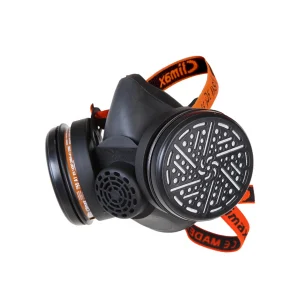Concrete Polishing Guide
This guide should give you all the information you need to start polishing concrete. If there are questions that haven’t been answered below, please don’t hesitate to get in touch and we will get back to you.
- Introduction
- Materials and Tools You’ll Need
- Preparation
- Grinding
- Cleaning
- Densifying
- Grout
- Polishing
- Sealing (Optional but Recommended)
- Buffing (Optional)
- Tips
- Summary
How do you polish concrete?
Please note this is only to be used as a brief guide and every floor is different. For expert advice tailored to your project please give one of our team a call.
Polishing concrete is a process that can transform a dull and rough concrete surface into a smooth and shiny one, it can even closely resemble granite or marble. Whether you’re working on a concrete floor, countertop or other surface, here’s a step-by-step guide on how to polish concrete.
Materials and Tools You'll Need
- 1. Concrete grinder/polisher
- 2. Diamond polishing pads (grit levels: 30, 50, 100, 200, 400, 800, 1500, 3000)
- 3. Wet/dry vacuum
- 4. PPE (safety glasses, dust mask, ear protection, and gloves)
- 5. Concrete densifier
- 6. Grout (optional)
- 7. Microfiber mop or applicator
- 8. High-quality sealer
- 9. Leads and transformers
- 10. Burnishing machine + pads (optional)

Floor Preparation
Clear the area of any furniture or obstacles.
Vacuum the area to remove loose debris, dust and dirt.
Repair any cracks or imperfections in the concrete with patching compound.
Test the hardness of the concrete using an MOHS tester to decide on the best compound of diamond to use.
Grinding
If the floor isn’t perfectly flat, or you want to expose the aggregate, attach the appropriate diamond grinding pad (usually 25g) to the concrete grinder.
If the floor is flat and you don’t need to expose the aggregate then you can start with 80 grit.
Start grinding the surface evenly. To get an even finish you should try and move at the same speed and alternate passes from north to south, and then east to west. After you have completed the first stage, make sure that you have an even scratch pattern across the whole floor. Any areas that do not may indicate you have a low spot. Keep grinding until you have an even scratch pattern throughout.
Gradually progress to higher-grit pads, increasing the smoothness of the surface with each pass, moving on to 80 and then 150g. After each stage make sure that the scratches from the last grit have been reduced to the current grit.
Cleaning
Use a vacuum, connected to the machine to remove the dust and debris generated during grinding, and then use the floor tool to vacuum the area between each grade. This keeps the workspace clean and allows you to see the progress.
Densifying
Apply a concrete densifier to the surface. Follow the manufacturer’s instructions for the specific product you’re using.
A densifier helps harden the concrete and improve its resistance to stains and wear.
This is normally done between 150 metal and 100 plastic stages.
Grout
Apply a concrete grout to the surface. Follow the manufacturer’s instructions for the specific product you’re using.
A grout helps fill holes and small cracks.
This is normally done between to 80 and 150 metal stage.
Polishing
Attach the diamond polishing pad with the lowest polishing grit (usually 100) to the grinder.
Begin polishing the concrete, gradually working your way to higher grit pads (200, 400, 600 etc.)
Continue polishing until the surface achieves the desired level of shine and smoothness.
Sealing (Optional but Recommended)
Apply a high-quality concrete sealer to protect the polished surface from stains and damage. Follow the manufacturer’s instructions for the sealer you choose.
Buffing (Optional)
For an even higher level of shine, you can use a burnishing machine with a polishing pad. This step is optional and may not be necessary for all projects.
Tips
- Always wear appropriate safety gear, including safety glasses, a dust mask, ear protection, and gloves.
- Work methodically and at a steady pace to ensure an even finish.
- Keep the grinder and polishing machine moving to avoid creating uneven spots.
- Be patient, as achieving a high-gloss finish can take time and multiple passes.
- Polishing concrete can be a labour-intensive process, but the results can be stunning. It’s important to follow the manufacturer’s instructions for your specific equipment and products and to take safety precautions seriously.
To summarise the stages.
This is the most common way to polish concrete but isn’t necessarily the best method for every floor.
- Clean the area and check for foreign debris.
- Test the hardness of the concrete using an MOHS tester.
- Start with 25g or 80g shoes going up and down and then left to right until the whole floor has a scratch pattern.
- Start to remove the scratches using 80g if using 25s.
- Densify
- Use the 150g metals.
- Grout (if applicable).
- 100g plastic, followed by 200/400 etc.
- Seal.
